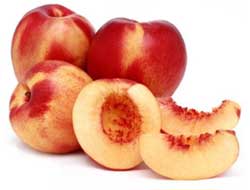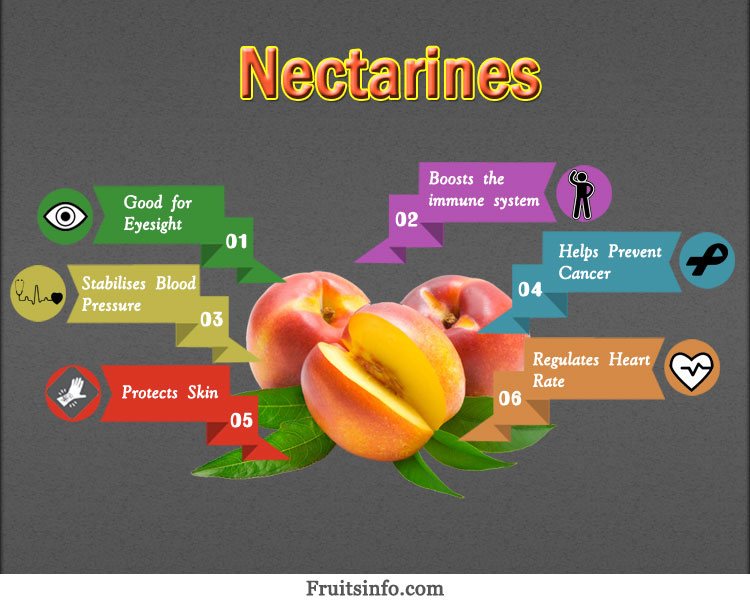 Full List of Fruits
Full List of Fruits  Nectarines
Nectarines Nectarines

Treated fruit had slightly higher amounts of surface injury, although the increase in surface injury was only an important factor to marketability in cultivars that had high amounts of surface injury prior to treatment.
Juiciness following extended cold storage was enhanced in treated fruit while soluble solids, acidity, weight loss and color were not significantly affected.
Taste panelists slightly preferred untreated over treated fruit although the differences may not be noticeable to the average consumer. Forced air heating combined with low oxygen and high carbon dioxide.
Most cultivars produce pollen at the time the stigma is receptive. Nectar is secreted at the base of the corolla. The flowers are highly attractive to honey bees and other pollen and nectar-collecting insects. The fact that only one ovule must be fertilized for a peach fruit to set as compared to hundreds of ovules in other fruit such as melons or papayas, enormously simplifies the pollination of the peach.
A close relative of the peach, nectarines are believed to have originated in China. They went to Europe via China and Persia in the 16th century and recently came to North America.
Originally white-fleshed, nectarines have interbred with peaches so that today the flesh is bright yellow-orange.
Genetically, the nectarine character is due to a single recessive gene in its parent, the peach.
This fruit, available from June through September from California, combines characteristics of both the peach and the plum.
Look for: Rich color and plumpness, and a slight softening along the “seam” of the nectarine. Most varieties have an orange-yellow background color between the red areas, but some varieties have a greenish background color. Bright-looking fruits which are firm to moderately hard will probably ripen normally within 2 or 3 days at room temperature.
Avoid: Hard, dull fruits or slightly shriveled fruits (which may be immature — picked too soon — and of poor eating quality) and soft or overripe fruits or those with cracked or punctured skin or other signs of decay. Russeting or staining of the skin may affect the appearance but not detract from the internal quality of the nectarine.
















